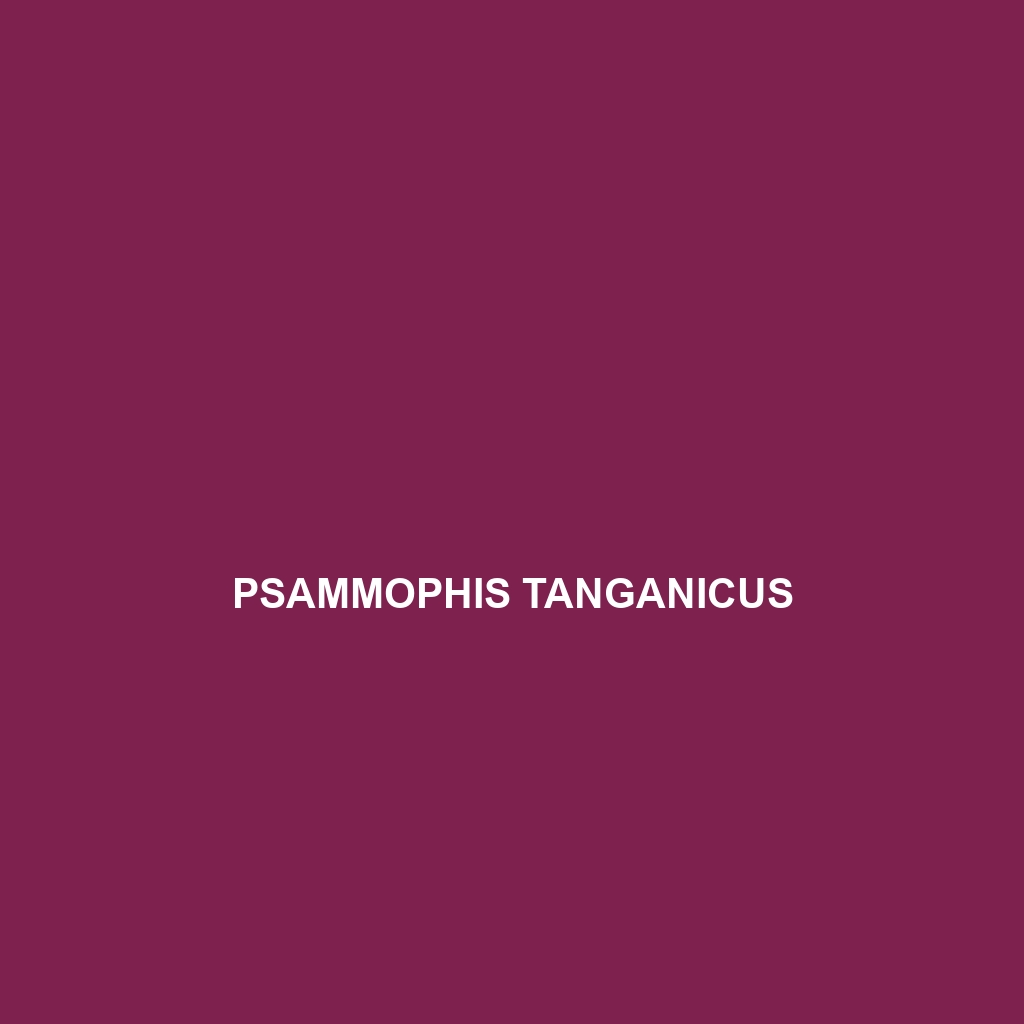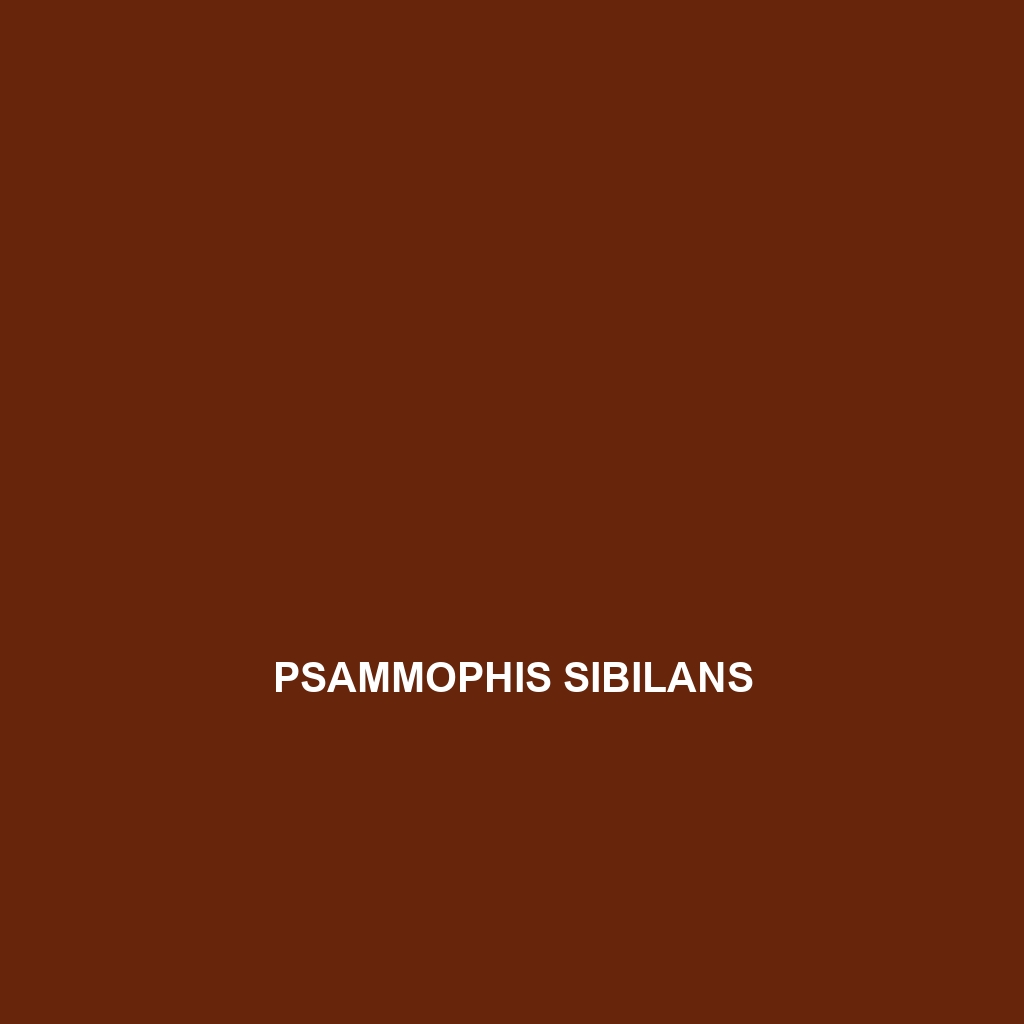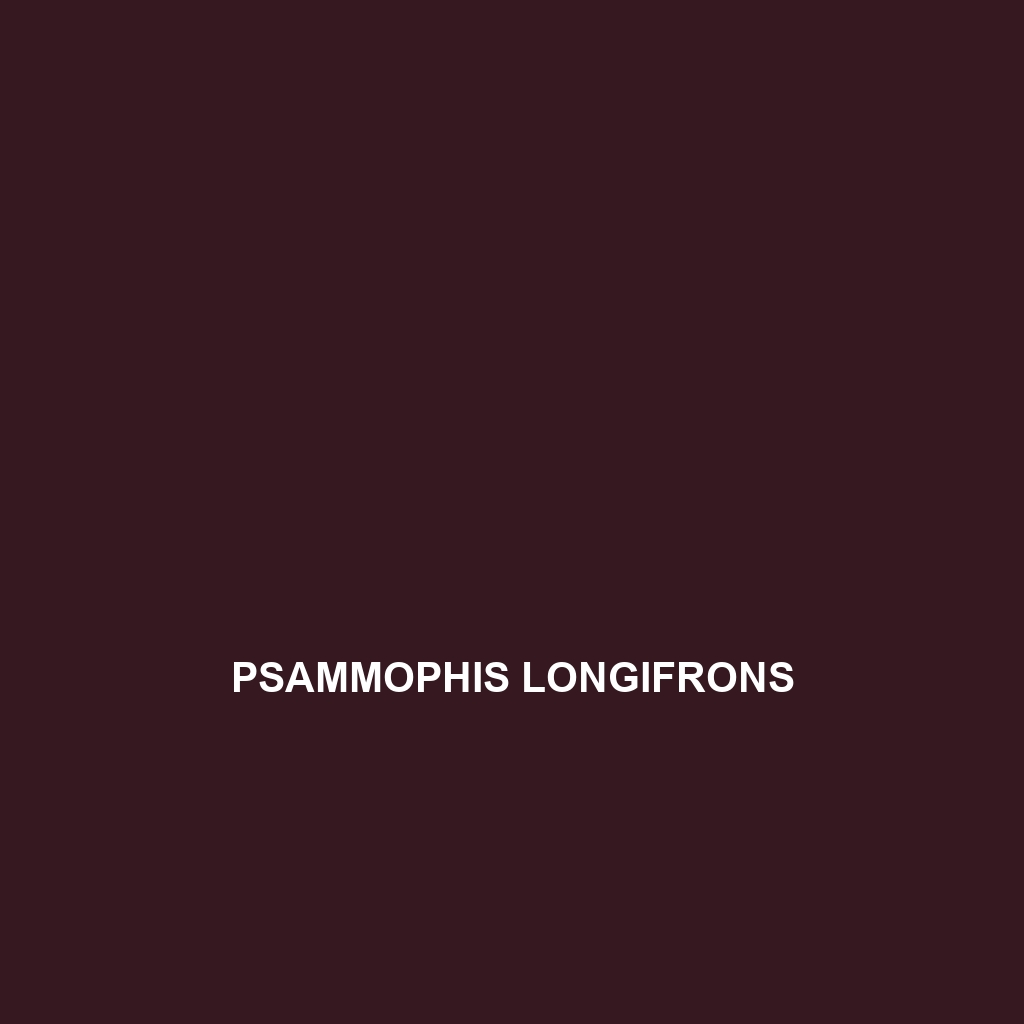Psammophis turpanensis, also known as the Turpan Sand Snake, is a slender, diurnal reptile native to the arid regions of Central Asia, particularly the Turpan Basin in China. With a size of 80 to 100 cm, it boasts sandy yellow to light brown coloration, distinctive adaptations for burrowing, and plays a crucial role in its ecosystem by preying on small mammals and lizards while contributing to biodiversity.
Tag: snake physical characteristics.
Psammophis tanganicus
The Psammophis tanganicus, or Tana River sand snake, is a non-venomous snake found in East Africa's sandy habitats, characterized by its slender body, smooth scales, and distinctive light brown coloration with darker patterns. This adaptable species preys on small rodents, lizards, and insects, playing a vital role in local ecosystems while exhibiting unique behaviors such as burrowing and rapid striking for defense.
Psammophis sibilans
<b>Psammophis sibilans</b>, also known as the African Slender Snake, is an agile and slender predator that thrives in savannas, grasslands, and subtropical forests across Africa. With a length of 60 to 80 centimeters and a distinctive mix of light browns, greens, and yellows for effective camouflage, this diurnal snake primarily preys on small mammals, lizards, and insects, playing a crucial role in its ecosystem.
Psammophis rukwae
<b>Psammophis rukwae</b> is a slender, diurnal snake native to eastern Africa, known for its striking yellow and light brown coloration with dark bands. Found primarily in open savannas and grasslands, this agile predator preys on small animals while playing a crucial role in maintaining ecological balance within its habitat.
Psammophis schokari
<b>Psammophis schokari</b>, known as the Schokar Sand Snake, is a slender, diurnal snake native to North Africa and the Middle East, typically measuring 60 to 100 cm in length. Adapted to sandy habitats, it exhibits excellent camouflage, preying on small vertebrates while showcasing unique behaviors like burrowing and slight color change for effective hiding.
Psammophis phillipsii
<strong>Psammophis phillipsii</strong>, commonly known as Phillips' sand snake, is a slender, 1.2 to 1.5-meter-long reptile found in Africa's arid habitats, characterized by its distinctive brown and yellow coloration with dark crossbands. This carnivorous snake demonstrates impressive speed and agility, predominantly feeding on small mammals and lizards while playing a crucial role in maintaining ecological balance.
Psammophis praeornatus
<b>Psammophis praeornatus</b>, also known as the East African sand snake, is a slender, diurnal species found in savannas, grasslands, and wooded areas of East Africa. This agile predator primarily feeds on small rodents, lizards, and insects, playing a crucial role in maintaining ecological balance within its habitat.
Psammophis notostictus
<b>Psammophis notostictus</b>, also known as the striped sand snake, is a slender, diurnal reptile native to arid regions of northeastern Africa, notable for its striking light brown coloration with dark stripes. This carnivore primarily feeds on small rodents and lizards, playing a crucial role in maintaining ecological balance within its diverse habitats.
Psammophis longifrons
<b>Psammophis longifrons</b>, or the Long-headed Sand Snake, is a unique, diurnal snake found in Africa's savannas and temperate forests, recognized for its elongated body, pale coloration, and distinct hunting strategies. Thriving in sandy habitats, this adaptable carnivore primarily preys on small mammals and lizards while playing a crucial role in its ecosystem as both predator and prey.
Psammophis lineatus
<p><b>Psammophis lineatus</b>, commonly known as the lined sand snake, is a slender and agile predator found in arid savannas and scrublands across Africa. With its striking coloration and remarkable speed, this carnivorous snake plays a vital role in controlling small vertebrate populations while exhibiting fascinating behaviors, including complex courtship rituals during mating season.</p>







